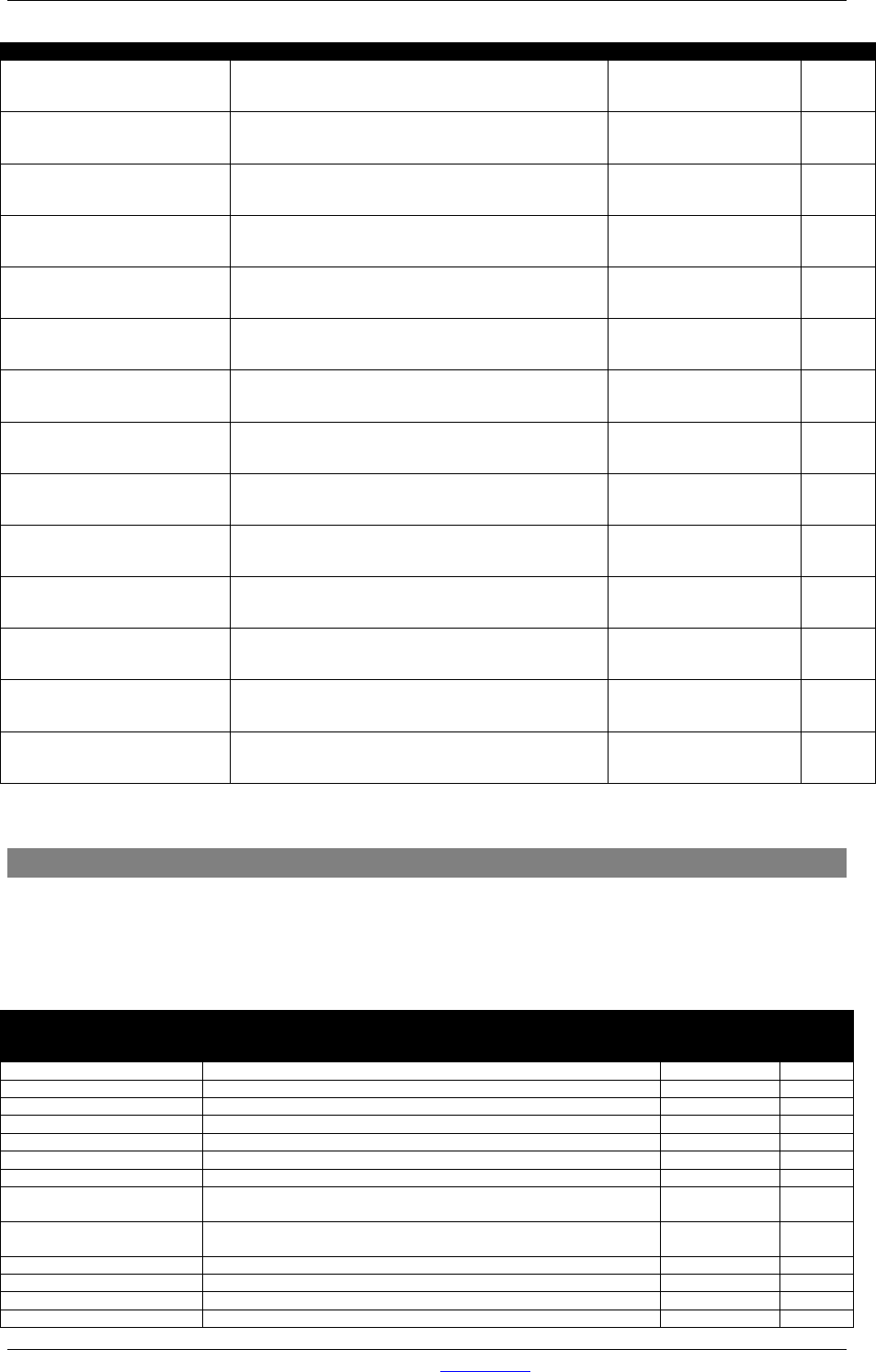User manual
Table Of Contents
- 1 Table of contents1 T
- 2 Package Contents
- 3 Introduction
- 4 System overview
- 5 Control Surfaces
- 6 AXUM Engine
- 6.1 Console 1-4 configuration
- 6.1.1 IP/Clock configuration
- 6.1.2 Global configuration
- 6.1.3 Mix buss configuration
- 6.1.4 Monitor buss configuration
- 6.1.5 Source configuration
- 6.1.6 Extern source configuration
- 6.1.7 Destination configuration
- 6.1.8 Talkback configuration
- 6.1.9 Processing presets
- 6.1.10 Module assignment
- 6.1.11 Module configuration
- 6.1.11.1 Module configuration page
- 6.1.11.2 Module preset 1A/1B, 2A/2B, 3A/3B, 4A/4B
- 6.1.11.3 Processing
- These are the programmed processing defaults for the modules. Depending on the startup settings these processing defaults will be used at startup (programmed defaults in global configuration).The field ‘Use at source select’ determines if the default module processing in the source configuration is used when a source is assigned via the module source select functionality and no processing preset is assigned in the ‘source configuration’.
- The following state/value processing sections are available:
- 6.1.11.4 Routing
- 6.1.11.5 Set module 1 to programmed startup state
- 6.1.12 Mix/monitor buss presets
- 6.1.13 Console presets
- 6.1.14 Surface configuration
- 6.1.15 Rack configuration
- 6.1.16 Source pools
- 6.1.17 Preset pools
- 6.1.18 Users
- 6.2 System configuration
- 6.1 Console 1-4 configuration
- 7 Surface(s) website
- 8 Block diagrams – Must be created
- 9 I/O Rack description
- 10 Available I/O rack cards
- 11 Patch panels
- 12 Specifications AXUM digital audio system
- 13 List Of Figures
- 14 List Of Tables
- 15 Declaration Of Conformity
- 16 Product Safety
- 17 Disclaimer
- 18 Appendix A - Network design for AXUM
- 19 Appendix B – Surface service
- 20 Appendix C – Engine functions

A·X·U·M User Manual Version 2.5 - 2011-01-28
AXUM from D&R - Phone: +31 294 418014 - E-Mail: info@d-r.nl - 118 -
Function Name
Comments
Object to connect to
Version
Console preset 20
After one second recalls the preset on-air safe.
After three seconds it forces the on-air channels to
recall.
Switch
2.1
Console preset 21
After one second recalls the preset on-air safe.
After three seconds it forces the on-air channels to
recall.
Switch
2.1
Console preset 22
After one second recalls the preset on-air safe.
After three seconds it forces the on-air channels to
recall.
Switch
2.1
Console preset 23
After one second recalls the preset on-air safe.
After three seconds it forces the on-air channels to
recall.
Switch
2.1
Console preset 24
After one second recalls the preset on-air safe.
After three seconds it forces the on-air channels to
recall.
Switch
2.1
Console preset 25
After one second recalls the preset on-air safe.
After three seconds it forces the on-air channels to
recall.
Switch
2.1
Console preset 26 After one second recalls the preset on-air safe.
After three seconds it forces the on-air channels to
recall.
Switch 2.1
Console preset 27 After one second recalls the preset on-air safe.
After three seconds it forces the on-air channels to
recall.
Switch 2.1
Console preset 28 After one second recalls the preset on-air safe.
After three seconds it forces the on-air channels to
recall.
Switch 2.1
Console preset 29
After one second recalls the preset on-air safe.
After three seconds it forces the on-air channels to
recall.
Switch
2.0
Console preset 30
After one second recalls the preset on-air safe.
After three seconds it forces the on-air channels to
recall.
Switch
2.0
Console preset 31
After one second recalls the preset on-air safe.
After three seconds it forces the on-air channels to
recall.
Switch
2.0
Console preset 32
After one second recalls the preset on-air safe.
After three seconds it forces the on-air channels to
recall.
Switch
2.0
Initialization status
This function gives information on the Initialization
status used by progress bars that may be displayed at
boot time.
Progress bar
2.5
20.6 Sources
Some objects have functionalities that relate to the source selected on a module. For example if you
have a GPI that needs to trigger a CUE or Alert module function. In addition, a GPO can have a
relation to the fader on/off of the module where its source is connected.
This group with source functions makes it possible to have source related module functionality:
Name
comments
Example
object to
connect to
Version
Module on
connect to the module(s) on if this source is selected
GPIO
2.0
Module off connect to the module(s) off if this source is selected
GPIO 2.0
Module on/off
connect to the module(s) on/off if this source is selected
GPIO
2.0
Module fader on
connect to the module(s) fader on if this source is selected
GPIO
2.0
Module fader off connect to the module(s) fader off this source is selected
GPIO 2.0
Module fader on/off
connect to the module(s) fader on/off this source is selected
GPIO
2.0
Module fader and on active
connect to the module(s) fader on and on if this source is selected
GPIO
2.0
Module fader and on
inactive
connect to the module(s) fader on and on if this source is selected
GPIO
2.0
Module fader and on
active/inactive
connect to the module(s) fader on and on if this source is selected
GPIO
2.2
Module buss 1/2 on connect to the module(s) buss 1/2 on if this source is selected
GPIO 2.0
Module buss 1/2 off
connect to the module(s) buss 1/2 off if this source is selected
GPIO
2.0
Module buss 1/2 on/off
connect to the module(s) buss 1/2 on/off if this source is selected
GPIO
2.0
Module buss 3/4 on
connect to the module(s) buss 3/4 on if this source is selected
GPIO
2.0










